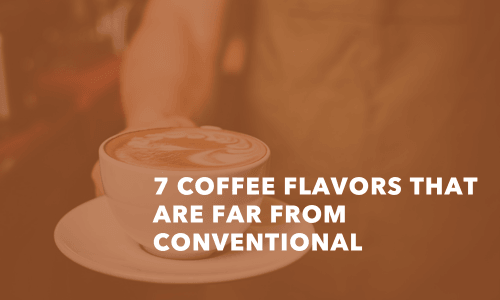4 Factors Affecting Coffee Flavor
Not all coffee is created equal. As a business serving coffee, you may be familiar with certain factors that influence the flavor of coffee, such as the roast of the coffee beans. But there are many other factors at play. Here are four factors, aside from roast, that affect flavor:
Type of Beans
There are four types of coffee beans: Arabica, Robusta, Liberica, and Excelsa. Arabica, which is used to produce the vast majority of coffee in the U.S., and Robusta are the two primary varieties.
Arabica trees are easy to care for and harvest because they are short. Arabica trees grow at higher elevations with steady rainfall and plenty of shade. In Hawaii, some coffee growers use "intercropping" in which macadamia trees are planted alongside Arabica trees to provide shade. Arabica trees are more prone to disease and environment than the other varieties, leading to occasional crop losses due to blight or drought.
Robusta trees are much hardier than Arabica trees but require extremely hot climates. Robusta beans have a much stronger flavor and higher caffeine content than Arabica beans.
Liberica and Excelsa were formerly treated as separate varieties, but Excelsa is now classified as a member of the Liberica family. Liberica and Excelsa trees can grow up to 30 feet high and produce beans with a smoky, roasty flavor. Liberica beans are grown almost exclusively in the Philippines and Excelsa beans are grown almost exclusively in Southeast Asia. Because of the geographic limitations of these trees and the limited quantities of beans grown, sourcing sufficient quantities of Liberica beans and Excelsa beans can be difficult and expensive for coffee businesses in the U.S.
Geographic Origin
There are a number of coffee producing regions around the world, with each producing coffee beans with different flavors even within the same variety. For example, Ethiopia, traditionally viewed as the birthplace of coffee, produces Arabica beans with a full body and strong, earthy flavor. On the other hand, Hawaii, where trees are grown in nutrient-rich volcanic soil with a mild climate and continuous rainfall, produces Arabica beans with a medium body and rich, aromatic flavor.
Brewing
Brewing is cooking. Coffee beans contain over 800 aromatic compounds including acids, fats, and sugars. These aromatic compounds contribute to flavor and aroma. Like wine, the aroma of coffee is essential to flavor. Instant coffee tastes "flat" because many of the compounds that contribute to the aroma of coffee are lost during the drying process.
Many of the same variables that affect food flavors, such as cooking time and temperature, will affect the flavor of coffee. For example, the grind size of the coffee grounds will affect how quickly water passes through the grounds and, thus, the brewing time. The temperature of the water will affect the amount and type of chemical compounds extracted from the grounds. The amount of time that a pot of coffee sits after brewing will affect the flavor and aroma of the brewed coffee.
Additions
This is not just about adding sugar and creamer and stirring with wooden coffee stirrers. Some drinks treat coffee as an ingredient that must be balanced against other ingredients such as condensed milk, flavored syrups, or spices. Moreover, the service temperature will affect the flavor. Hot coffee is aromatic. Iced coffee loses much of its aroma and the freezing temperature deadens the tongue to more subtle flavors.
For mixed coffee drinks, coffee accessories can have indirect effects on the taste of the coffee. For example, coffee businesses that serve espresso and caffe macchiato must supply coffee accessories like stir sticks. Espresso and caffe macchiato are meant to be stirred to incorporate the layers of sugar, coffee, and, in the case of caffe macchiato, milk into a blended drink.
Similarly, coffee accessories like lids must be supplied by coffee businesses that serve cappuccino, latte, and other hot coffee drinks, since the flavor and aroma of coffee changes as the coffee cools off. By providing coffee cups with lids, the temperature (and, thus, the aroma and flavor) is preserved.
In sum, roast is an important shorthand for the flavor of coffee. However, many other factors, such as the variety and origin of the beans, the brewing technique, and even the additions and coffee accessories, can play a part in the flavor of coffee and Read this blog post about Freezing Coffee: Do's and Don'ts.




